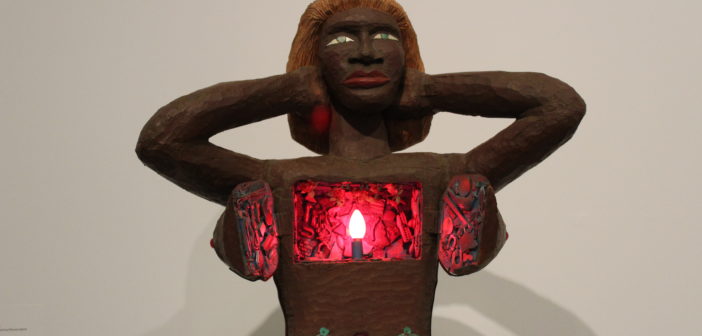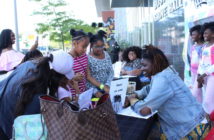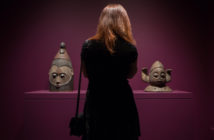“We believe that the most profound and potentially most radical politics come directly out of our own identity, as opposed to working to end somebody else’s oppression. In the case of black women, this is a particularly repugnant, dangerous, threatening and therefore revolutionary concept because it is obvious from looking at all the political movements that have preceded us that anyone is considered more worthy of liberation than ourselves. We reject pedestals, queenhood, and walking ten paces behind. To be recognized as human, levelly human, is enough.” -- Excerpt from “A Black Feminist Statement” by The Combahee River Collective
If you had no idea what you were in for, the above wall text sets the stage for the essence of what you’ll encounter in We Wanted A Revolution: Black Radical Women 1965-85 at The Brooklyn Museum. Curated by Catherine Morris and Rujeko Hockley, the exhibition offers visitors vignettes of humanity through the lens of printmaking, painting, sculpture, photography, performance and ephemeral works made by and for black women.
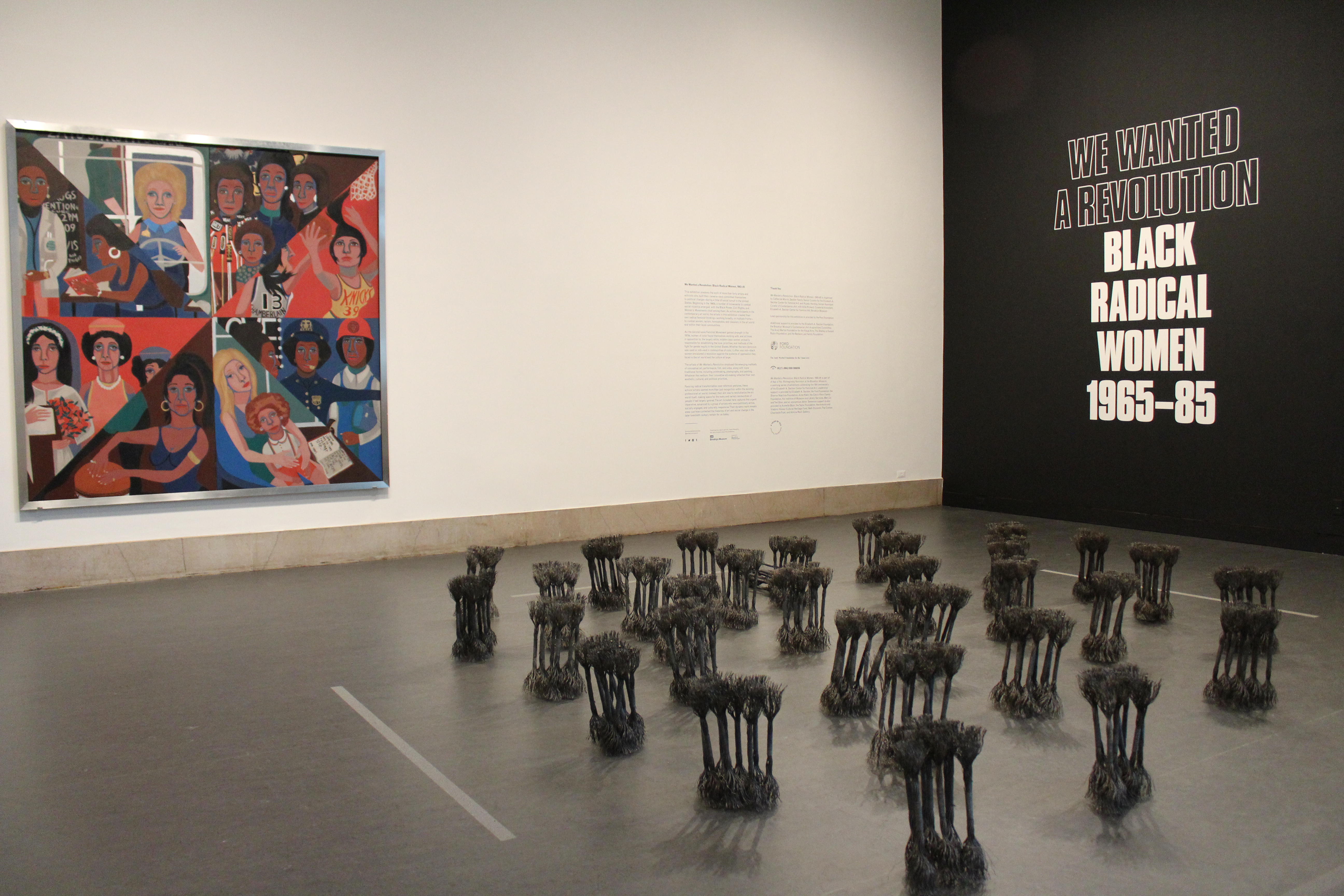
Another peek into a gallery space featuring work Faith Ringgold's "For the Women's House" and Maren Hassinger's "Leaning". Photo credit: Chanel Thervil
As they enter, visitors are embraced by an explosion of color that asserts the intrinsic vibrancy in the spectrum of representations of black women. Swirling abstract forms and text simultaneously cultivate rich environments and iconic figures in the garments, paintings, and prints by AfriCOBRA members, Jae Jarrell, Wadsworth Jarrell, and Barbara Jones-Hogu. Among the many messages of empowerment embedded within the compositions, the words “resist” and “unite” seem eerily current considering today’s political climate.
Another gem—echoing sentiments of the past, yet still very present is Elizabeth Catlett’s “Homage to My Young Black Sisters”—a wide hipped, copper colored, wooden sculpture of a woman with black-rimmed cores of negative spaces and a raised fist. It would be difficult to ignore its stance reflected in the images of athletes Tommie Smith and John Carlos on the podium during the national anthem at the 1968 Summer Olympics, especially since the work was created that same year. While that initial gesture—now coined “The Black Power Salute”—intended to display black power and unity despite the discrimination black people faced in America, it has been appropriated by a variety of people looking to evoke solidarity with others. Most recently, in a plethora of poster designs for The Women’s March that include daintily painted fingernails on fists of varying skin tones.
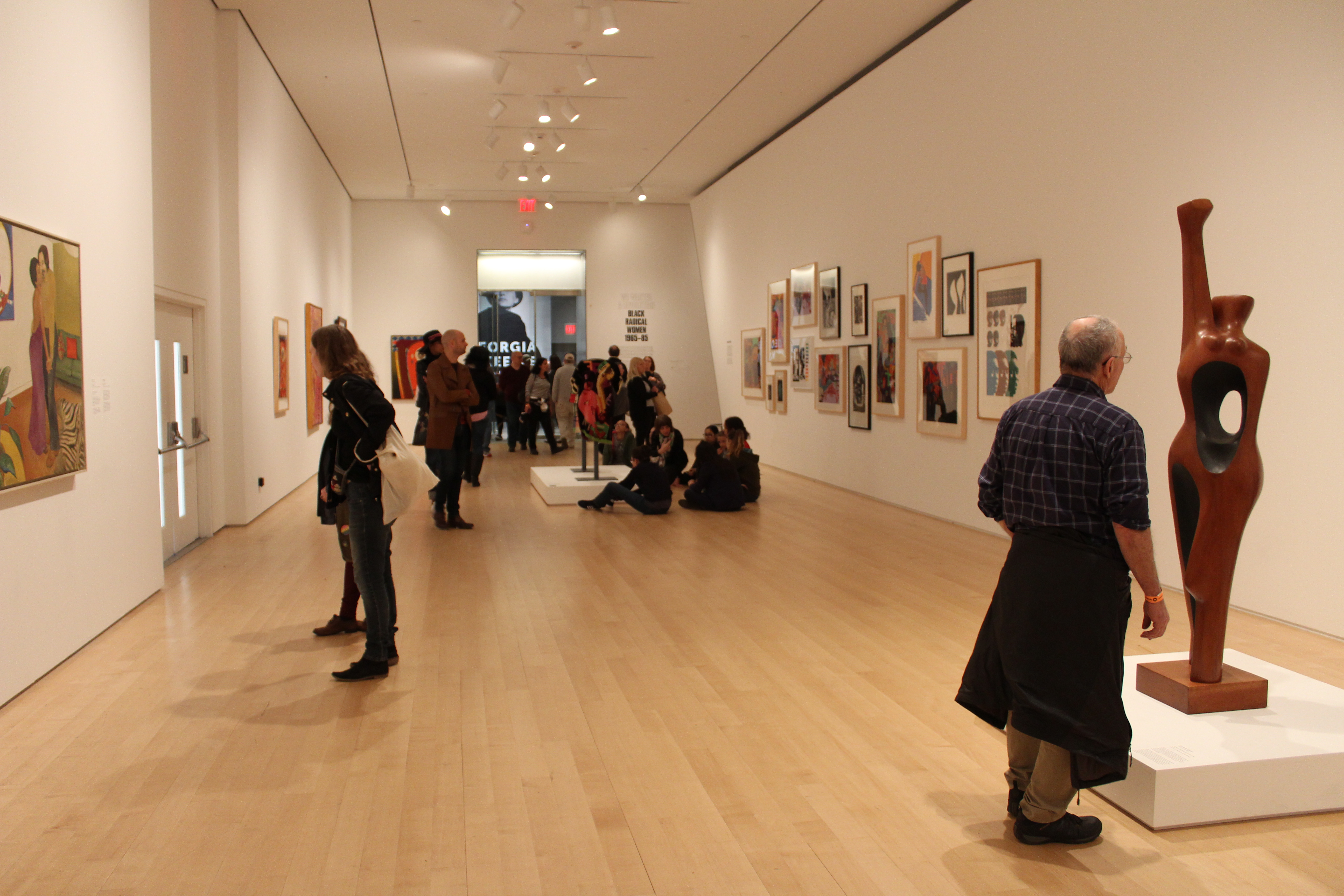
A peek into the first gallery space of the exhibition. Photo credit: Chanel Thervil
One of the striking elements in this exhibition is the care taken in not only curating the artwork but providing context behind the creation of the pieces via juxtaposition with texts and candid first-person narratives that breathe life into snapshots of the past. A great example of this is the inclusion of texts by the artists themselves or fellow black women creatives like Toni Morrison and Alice Walker as opposed to the standard and often sterile, museum distillation of language. Whether reading the handwritten letter filmmaker Linda Goode Bryant writes to her parents about “suffocating from whiteness” post move to NYC as a teenager, or skimming the original script of “Daughters of the Dust” covered in Julie Dash’s pen ink, no piece of ephemera is deemed trivial. This labor of love is echoed in the sourcebook that accompanies the exhibition in lieu of a catalogue through the reprinting of texts from woman operated publications like Ms., HERESIES, and Feminist Art Journal.
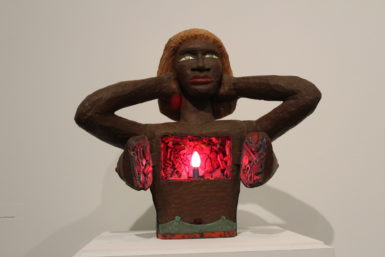
A face to face view of Betye Saar’s “Sapphire”. Photo credit: Chanel Thervil
Barbara Chase Riboud’s “Confessions for Myself” is the gentle giant of the exhibition. Despite towering at 10 feet tall, viewers find themselves engulfed in analyzing the gracefully tangled intricacies of bent bronze and woolen twists drenched in black paint. Whether you interpret this work as a cape or cocoon, it speaks to complex relationships black women have with mental health, self-care and privacy while trying to manage realities that can be less than forgiving. Research by psychologist Monnica Williams, Ph.D. recently found the physiological effects of racism on people of color can lead to symptoms of PTSD. This “Race-Based Stress and Trauma” combined with the misogyny embedded in the fabric of society easily becomes a recipe for damaging perceptions of self for black women.
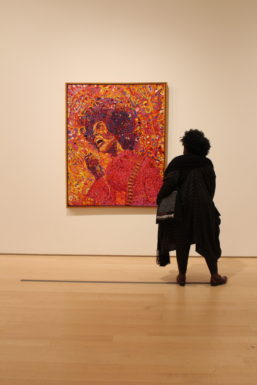
A visitor stares transfixed with Wadsworth Jarrell's "Revolutionary (Angela Davis)"
On a similar note, Betye Saar’s “Sapphire” plays on the stereotype the aggressive, angry black women whose overbearing nature and lack of compassion damages her relationships with men and children. Saar dissects “Sapphire” by splitting her breasts, like window shutters to reveal a shrine of roses, toys, and other trinkets evoking symbolism of experiences and thoughts kept hidden—saturated in red paint. In place of her heart lies a light that enhances the red velvet glow of stories untold on each surface. In addition, works like Emma Amos’ “Preparing for a Facelift” and Faith Ringgold’s “For the Women’s House” emit self-affirmation despite the minimal representations of women of color, political unrest and civil rights battles that were rampant during the time of their creation and still are today.
What I continue to find radical about black women is their audacity to dream, create, and thrive while navigating the ever-present systems meant to discount or diminish their presence in society. As a black woman, who also happens to be an artist and Brooklynite at heart, I walked out of this exhibition feeling inspired, grateful that many of the artists featured are still living, yet slightly wary of the potential artists who are still unseen. One can only hope that this encourages other institutions to take note, dig deeper, and continue moving in the direction of amplifying the voices that have always been present—yet remain excluded from the exhibition circuit.
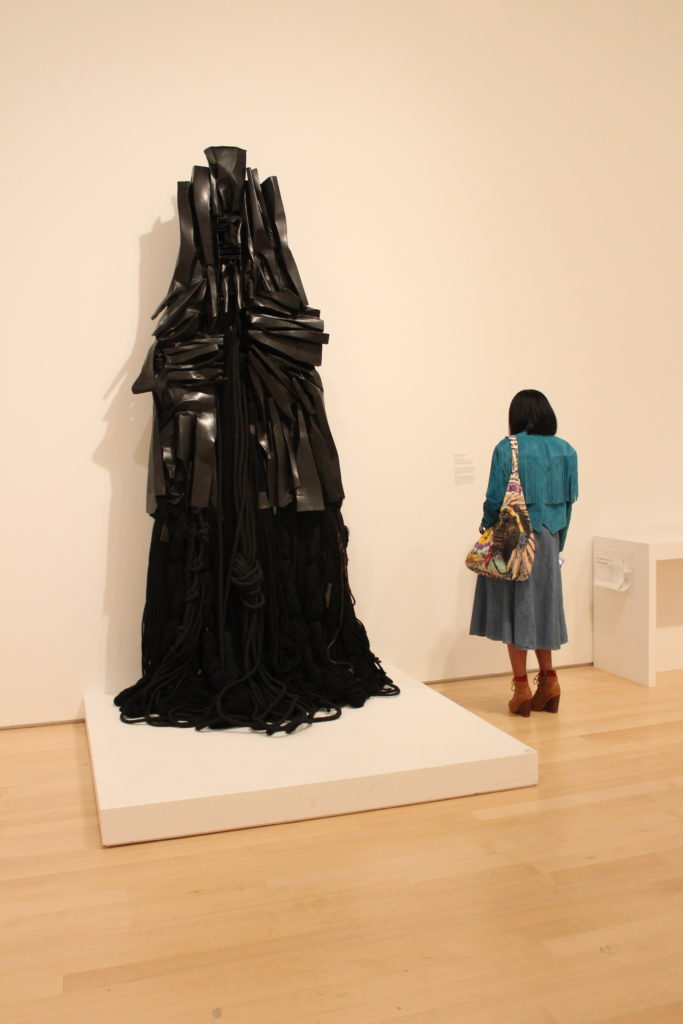
One of the visitors sized up beside Barbara Chase Riboud’s “Confessions for Myself”. Photo credit: Chanel Thervil
We Wanted a Revolution: Black Radical Women, 1965–85 is on view at the Brooklyn Museum through September 17, 2017, then travels to California African American Museum, Los Angeles, California October 13, 2017–January 14, 2018 and Institute of Contemporary Art, Boston, Massachusetts June 26–September 30, 2018
Works Referenced:
- A Black Feminist Statement, 1977, Combahee River Collective
- Black Athletes Make Silent Protest, 1968, BBC
- Mammy, Jezebel, Sapphire and Their Homegirls: Developing an Oppositional Gaze Towards the Images of Black Women, 2008, Dr. Carolyn M. West
- Structural Realities Black Women Face in America, 2015, Jamilah King
- The Link Between Racism and PTSD, 2015, Monnica T Williams Ph.D.
- Racism’s Psychological Toll, New York Times, 2015, Jenna Wortham
- Venice Biennale Artists by the Numbers, 2017, Artsy

